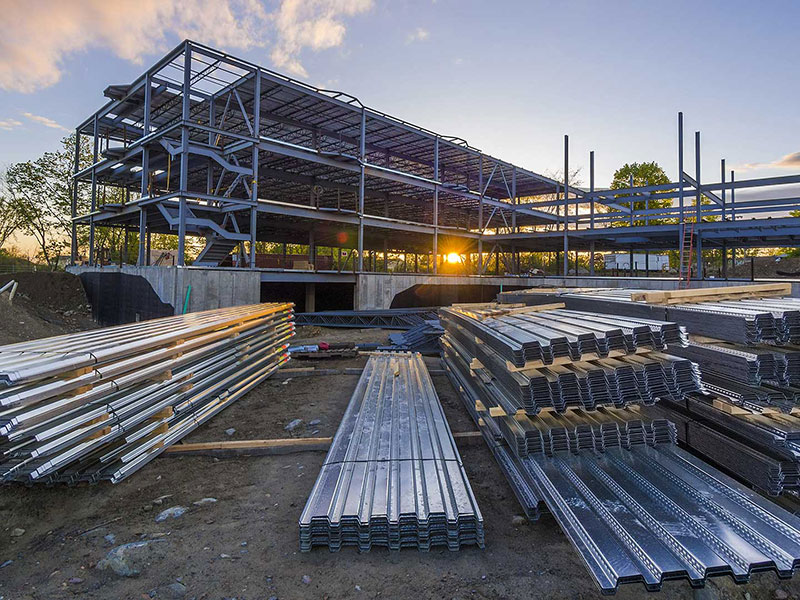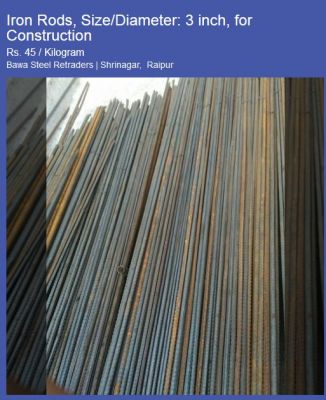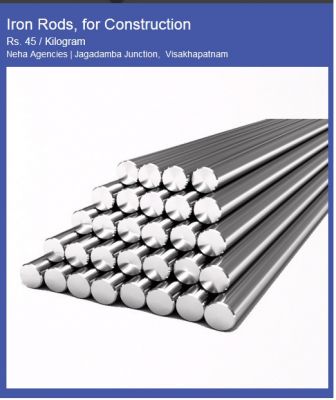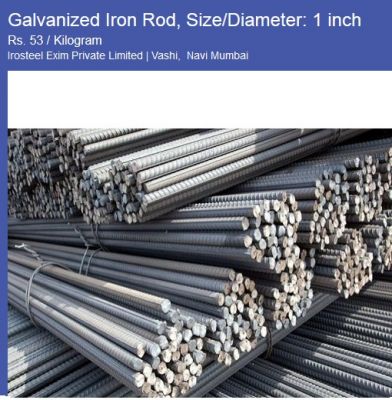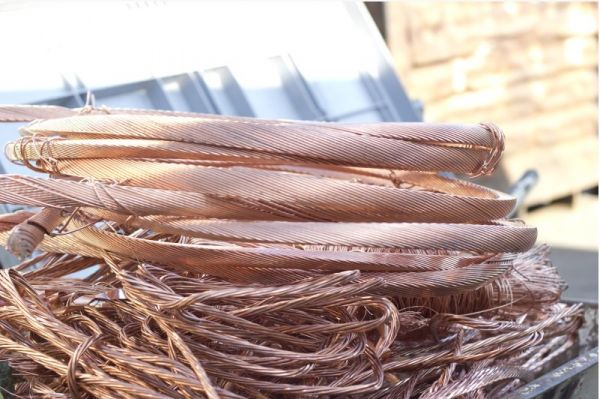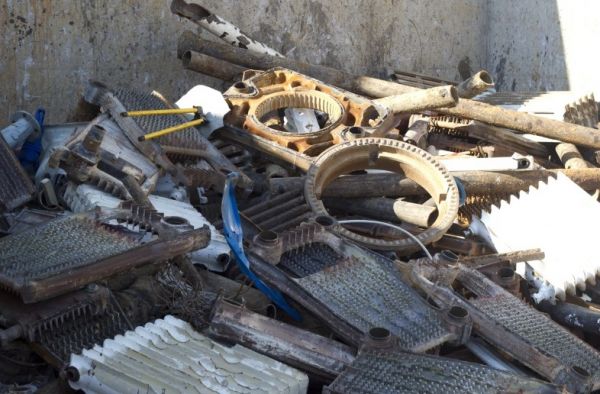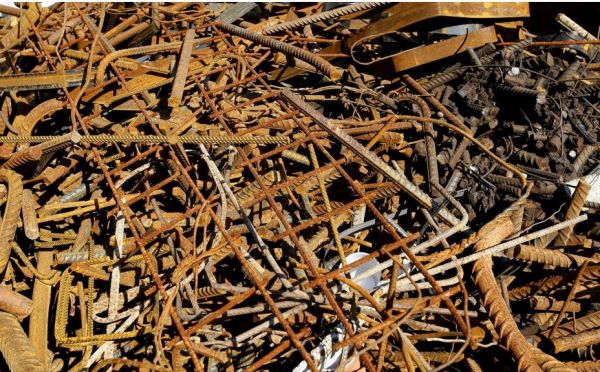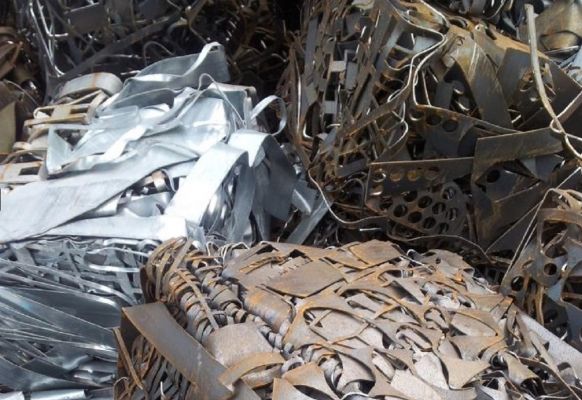Building material is any material which is used for construction purposes. Many naturally occurring substances, such as clay, rocks, sand, and wood, even twigs and leaves, have been used to construct buildings. Apart from naturally occurring materials, many man-made products are in use, some more and some less synthetic. The manufacturing of building materials is an established industry in many countries and the use of these materials is typically segmented into specific specialty trades, such as carpentry, insulation, plumbing, and roofing work. They provide the make-up of habitats and structures including homes.
Economic costs
Initial economic cost of building materials is the purchase price. This is often what governs decision making about what materials to use. Sometimes people take into consideration the energy savings or durability of the materials and see the value of paying a higher initial cost in return for a lower lifetime cost. For example, an asphalt shingle roof costs less than a metal roof to install, but the metal roof will last longer so the lifetime cost is less per year. Some materials may require more care than others, maintaining costs specific to some materials may also influence the final decision. Risks when considering lifetime cost of a material is if the building is damaged such as by fire or wind, or if the material is not as durable as advertised. The cost of materials should be taken into consideration to bear the risk to buy combustive materials to enlarge the lifetime. It is said that, 'if it must be done, it must be done well.
Energy costs
the Initial energy costs include the amount of energy consumed to produce, deliver and install the material. The long term energy cost is the economic, ecological, and social costs of continuing to produce and deliver energy to the building for its use, maintenance, and eventual removal. The initial embodied energy of a structure is the energy consumed to extract, manufacture, deliver, install, the materials. The lifetime embodied energy continues to grow with the use, maintenance, and reuse/recycling/disposal of the building materials themselves and how the materials and design help minimize the life-time energy consumption of the structure.
MATERIALS EXPLANATION :
Sand
Sand is used with cement, and sometimes lime, to make mortar for masonry work and plaster. Sand is also used as a part of the concrete mix. An important low-cost building material in countries with high sand content soils is the Sandcrete block, which is weaker but cheaper than fired clay bricks.
Stone or rock
Rock structures have existed for as long as history can recall. It is the longest lasting building material available, and is usually readily available. There are many types of rock throughout the world, all with differing attributes that make them better or worse for particular uses. Rock is a very dense material so it gives a lot of protection too; its main drawback as a material is its weight and awkwardness. Its energy density is also considered a big drawback, as stone is hard to keep warm without using large amounts of heating resources.
Dry-stone walls have been built for as long as humans have put one stone on top of another. Eventually, different forms of mortar were used to hold the stones together, cement being the most commonplace now.
The granite-strewn uplands of Dartmoor National Park, United Kingdom, for example, provided ample resources for early settlers. Circular huts were constructed from loose granite rocks throughout the Neolithic and early Bronze Age, and the remains of an estimated 5,000 can still be seen today. Granite continued to be used throughout the Medieval period (see Dartmoor longhouse) and into modern times. Slate is another stone type, commonly used as roofing material in the United Kingdom and other parts of the world where it is found.
Stone buildings can be seen in most major cities; some civilizations built entirely with stone such as the Egyptian and Aztec pyramids and the structures of the Inca civilization.
Cement composites
Cement bonded composites are made of hydrated cement paste that binds wood, particles, or fibers to make pre-cast building components. Various fiberous materials, including paper, fiberglass, and carbon-fiber have been used as binders.
Wood and natural fibers are composed of various soluble organic compounds like carbohydrates, glycosides and phenolics. These compounds are known to retard cement setting. Therefore, before using a wood in making cement bonded composites, its compatibility with cement is assessed.
Wood-cement compatibility is the ratio of a parameter related to the property of a wood-cement composite to that of a neat cement paste. The compatibility is often expressed as a percentage value. To determine wood-cement compatibility, methods based on different properties are used, such as, hydration characteristics, strength, interfacial bond and morphology. Various methods are used by researchers such as the measurement of hydration characteristics of a cement-aggregate mix; the comparison of the mechanical properties of cement-aggregate mixes and the visual assessment of microstructural properties of the wood-cement mixes.
It has been found that the hydration test by measuring the change in hydration temperature with time is the most convenient method. Recently, Karade et al.[19] have reviewed these methods of compatibility assessment and suggested a method based on the ‘maturity concept’ i.e. taking in consideration both time and temperature of cement hydration reaction.
Bricks were laid in lime mortar from the time of the Romans until supplanted by Portland cement mortar in the early 20th century. Cement blocks also sometimes are filled with
grout or covered with a parge coat.
Glass
Glassmaking is considered an art form as well as an industrial process or material.
Clear windows have been used since the invention of glass to cover small openings in a building. Glass panes provided humans with the ability to both let light into rooms while at the same time keeping inclement weather outside.
Glass is generally made from mixtures of sand and silicates, in a very hot fire stove called a kiln, and is very brittle. Additives are often included the mixture used to produce glass with shades of colors or various characteristics (such as bulletproof glass or lightbulbs.
The use of glass in architectural buildings has become very popular in the modern culture. Glass "curtain walls" can be used to cover the entire facade of a building, or it can be used to span over a wide roof structure in a "space frame". These uses though require some sort of frame to hold sections of glass together, as glass by itself is too brittle and would require an overly large kiln to be used to span such large areas by itself.
Glass bricks were invented in the early 20th century.
Gypcrete
Gypcrete is a mixture of gypsum plaster and fibreglass rovings. Although plaster and fibres fiborous plaster have been used for many years, especially for ceilings, it was not until the early 1990s that serious studies of the strength and qualities of a walling system Rapidwall, using a mixture of gypsum plaster and 300mm plus fibreglass rovings, were investigated. It was discovered, through testing at the University of Adelaide, that these walls had significant, load bearing, shear and lateral resistance together with earthquake-resistance, fire-resistance, and thermal properties. With an abundance of gypsum (naturally occurring and by-product chemical FGD and phospho gypsums) available worldwide, gypcrete-based building products, which are fully recyclable, offer significant environmental benefits.
Metal
Metal is used as structural framework for larger buildings such as skyscrapers, or as an external surface covering. There are many types of metals used for building. Metal figures quite prominently in prefabricated structures such as the Quonset hut, and can be seen used in most cosmopolitan cities. It requires a great deal of human labor to produce metal, especially in the large amounts needed for the building industries. Corrosion is metal's prime enemy when it comes to longevity.
- Steel is a metal alloy whose major component is iron, and is the usual choice for metal structural building materials. It is strong, flexible, and if refined well and/or treated lasts a long time.
- The lower density and better corrosion resistance of aluminium alloys and tin sometimes overcome their greater cost.
- Copper is a valued building material because of its advantageous properties (see: Copper in architecture). These include corrosion resistance, durability, low thermal movement, light weight, radio frequency shielding, lightning protection, sustainability, recyclability, and a wide range of finishes. Copper is incorporated into roofing, flashing, gutters, downspouts, domes, spires, vaults, wall cladding, building expansion joints, and indoor design elements.
- Other metals used include chrome, gold, silver, and titanium. Titanium can be used for structural purposes, but it is much more expensive than steel. Chrome, gold, and silver are used as decoration, because these materials are expensive and lack structural qualities such as tensile strength or hardness.
Plastics
Plastic pipes penetrating a concrete floor in a Canadian highrise apartment building
The term "plastics" covers a range of synthetic or semi-synthetic organic condensation or polymerization products that can be molded or extruded into objects, films, or fibers. Their name is derived from the fact that in their semi-liquid state they are malleable, or have the property of plasticity. Plastics vary immensely in heat tolerance, hardness, and resiliency. Combined with this adaptability, the general uniformity of composition and lightness of plastics ensures their use in almost all industrial applications today. High performance plastics such as ETFE have become an ideal building material due to its high abrasion resistance and chemical inertness. Notable buildings that feature it include: the Beijing National Aquatics Center and the Eden Project biomes.
Papers and membranes
Building papers and membranes are used for many reasons in construction. One of the oldest building papers is red rosin paper which was known to be in use before 1850 and was used as an underlayment in exterior walls, roofs, and floors and for protecting a jobsite during construction. Tar paper was invented late in the 19th century and was used for similar purposes as rosin paper and for gravel roofs. Tar paper has largely fallen out of use supplanted by asphalt felt paper. Felt paper has been supplanted in some uses by synthetic underlayments, particularly in roofing by synthetic underlayments and siding by housewraps.
There are a wide variety of damp proofing and waterproofing membranes used for roofing, basement waterproofing, and geomembranes.
Types of Building Materials Used in Construction
There are many types of materials used in construction. The most common types of materials I work with on a regular basis are reinforced concrete, steel, wood and masonry. Each material has different properties such as density, strength, durability and cost which makes some more suitable than others depending on the application.
Contents of Post
1 Types of Building Materials Used in Construction
1.1 Concrete:
1.2 Steel:
1.3 Wood:
At the start of a project I work with clients to choose the most appropriate structural systems and materials that are economical and adequate to resist the loads acting on the structure. I have designed the structural system for a three-story residential apartment building using wood framing, however for taller multi-story buildings I have used a combination of reinforced concrete, steel and masonry. In order to pick the most appropriate construction materials, the building size, applied loads and use of the building all need to be taken into account.
Choosing the construction materials and structural systems is a key decision that has to be made at the beginning of the project and has a direct effect on the cost and success of the project. As a structural engineer, I work with my clients and guide them through a process which often involves proposing different design alternatives, investigating the availability of certain construction materials, and review their costs and which includes considerations for labour as well.
The manufacturing of building materials is a well established and standardized industry capable of providing a reliable supply of high-quality materials for our structures.The production of structural-grade building materials is subject to quality control procedures that involve inspection and testing according to national standards and scientific testing methods.
Part of the structural engineer’s responsibilities is to prepare the project specifications including all building materials and applicable standards and provision to comply with. This is a crucial part of any project to specify the quality and properties of all construction materials.
Building materials can generally be divided into two categories: Natural building materials such as stone and wood, and man-made building materials such as concrete and steel. Both categories usually require a certain level of preparation or treatment before they are used in a structural application. Here is a breakdown of these materials.
Concrete is a composite material made from mixing cement, aggregates such as sand and crushed stone and water. I get a chance to design concrete structures for our clients on a regular basis that are made partially or entirely from concrete. Concrete is very strong when exposed to compression stresses,but it is brittle and has limited tensile strength. Combined with steel rebar, reinforced concrete is stronger and more suitable for a wide range of structures such as tall multi-story buildings, bridges, roads, tunnels and so many other applications.
Concrete can be mixed on site or delivered in a concrete mixing truck and then poured in formworks. This method of producing concrete is the most common and is called cast-in-place concrete. Fresh concrete can be poured into formworks to take any shape or form and takes time to harden into a stone-like material.
Another method of building with concrete is called precast concrete. Manageable size elements of concrete are built and cured in a precast environmentally controlled facility and shipped to the construction site for installation. The properties of concrete depend on the ratios used in the mix design and requires rigorous quality control, which is one of the benefits of precast concrete.
Concrete can take up to 7 days for concrete to reach most of its strength and needs special attention in the early curing stage to avoid cracking or reduction in capacity. Concrete is very versatile and is my go to material for applications that require a combination of strength and durability. For example, concrete is an excellent material for building foundations where the weight of the structure meets the ground. This requires strength to carry the load and also durability to withstand the contact with the surrounding soil.
Steel is one of the strongest building materials available with excellent strength capacity in both tension and compression. Because of its high strength-to-weight ratio, it is ideal for structural framework of tall buildings and large industrial facilities. Structural steel is available in standard shapes such are angles, I beams and C-channels. These shapes can be welded together or connected using high-strength bolts to build structures capable of resisting large forces and deformations.
Steel is a relatively expensive building material so it is the structural engineer’s responsibility to choose economic sizes and shapes according to the actual loads on the building to avoid overdesign. Because of the the higher cost of steel, I often get questions from our clients asking if there is a way to reduce the weight and size of some of steel members in the structure. This can be done if the loads can be reduced on the members and/or additional vertical supports can be introduced. The installation of steel is less time consuming compared to concrete and can be installed in any type of environment.
Wood has been used as a construction material for thousands of years and if properly maintained can last for hundred of years. It is a readily available and economically feasible natural resource with a light weight and highly machinable properties. It also provides good insulation from the cold which makes it an excellent building material for homes and residential buildings.
Wood pieces used in construction are machine-planed and sawn into certain dimensional specifications. Dimensional lumber comes in widely available sections such as 2”x4”, 2”x6”, etc. This is commonly used in the construction of walls and floors. Believe it or not, a 2”x4” is actually 1 ½” wide x 3 ½” high. Wood that comes in larger dimensions are referred to as timber or beams and are commonly used to construct the frames of large structures such as bridges and multi-story buildings. Engineered wood is another type of wood used in construction that consist of various forms of wood glued together to form a composite material suitable for specific construction applications. Examples of engineered wood is glued laminated wood (glulam), plywood and fiberboard.
Because of its light weight, wood is not the most suitable construction material to support heavier loads and not ideal for long spans. Wood is rarely used for foundations and basement walls, as it needs to be pressure treated because of its contact with soil/moisture which can be fairly expensive. In a wood framed house, the foundations and basement walls are usually constructed with reinforced concrete.
Masonry:
Masonry construction is using individual units to build structures that are usually uses mortar to bound the units together. The most common material I use in the design of masonry structures is concrete block, with vertical steel reinforcing if required. Masonry is strong in resisting compression loads/stresses which makes it ideal to use for the construction of load bearing walls. Other masonry materials include brick, stone and glass block. Masonry is a highly durable and fire resistant material, however it can be sensitive to mortar and workmanship quality.
There has been an increase in the use of masonry as load bearing walls for the design of multi-story buildings in my office. The structural system typically consists of concrete floors supported on a combination of masonry and reinforced concrete walls depending on the number of floors and amount of load on the walls. Masonry walls with windows or openings need horizontal beams or lintels to span the weight of the wall above across the opening. Masonry is not as accommodating to large openings in walls as concrete or steel framing is, but can be an economical choice if the framing and opening sizes are reasonable and length of wall segments are not too short.
Load bearing masonry walls can be stacked up on top of one another to build multi-story buildings. The load on the first floor masonry wall is the accumulation of all the weight of the floors above it. Therefore, the bottom floor wall must be stronger than the upper floor walls. This can be achieved by reinforcing the voids in the bottom masonry walls with steel bars and concrete grout. More steel bars closer spacing of grouted cores equals stronger masonry walls. If a load bearing masonry wall does not extend all the way down to the foundation because of required openings such as parkade drive aisles, large concrete or steel transfer beams are required to support the wall above the opening.
There is lots more that can be covered on the topic of construction materials, but hopefully this gives you a good understanding of each of the major materials and the applications that are best suited for each of them. If you have any questions on any of these materials, feel free to leave them in the comment section below.



